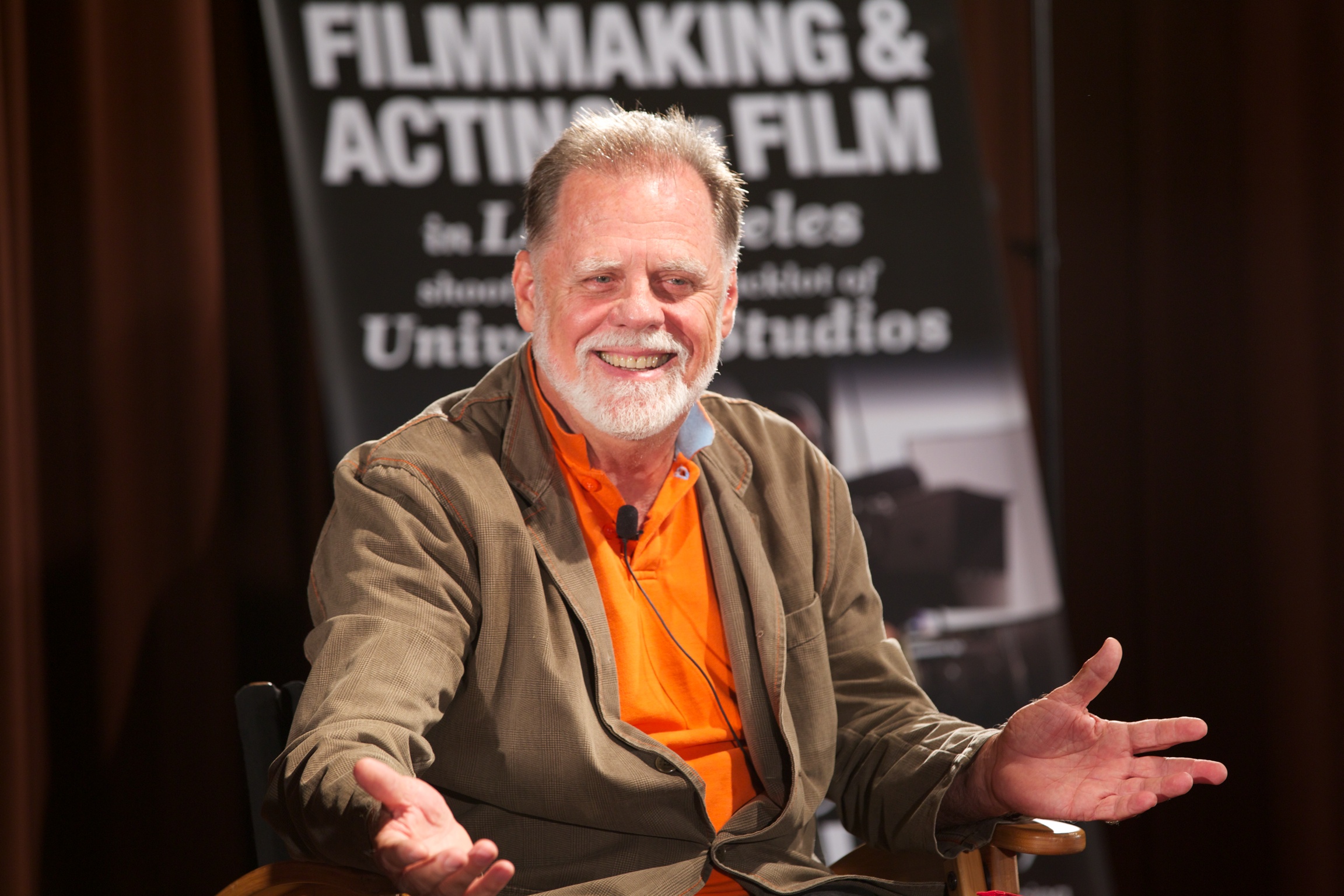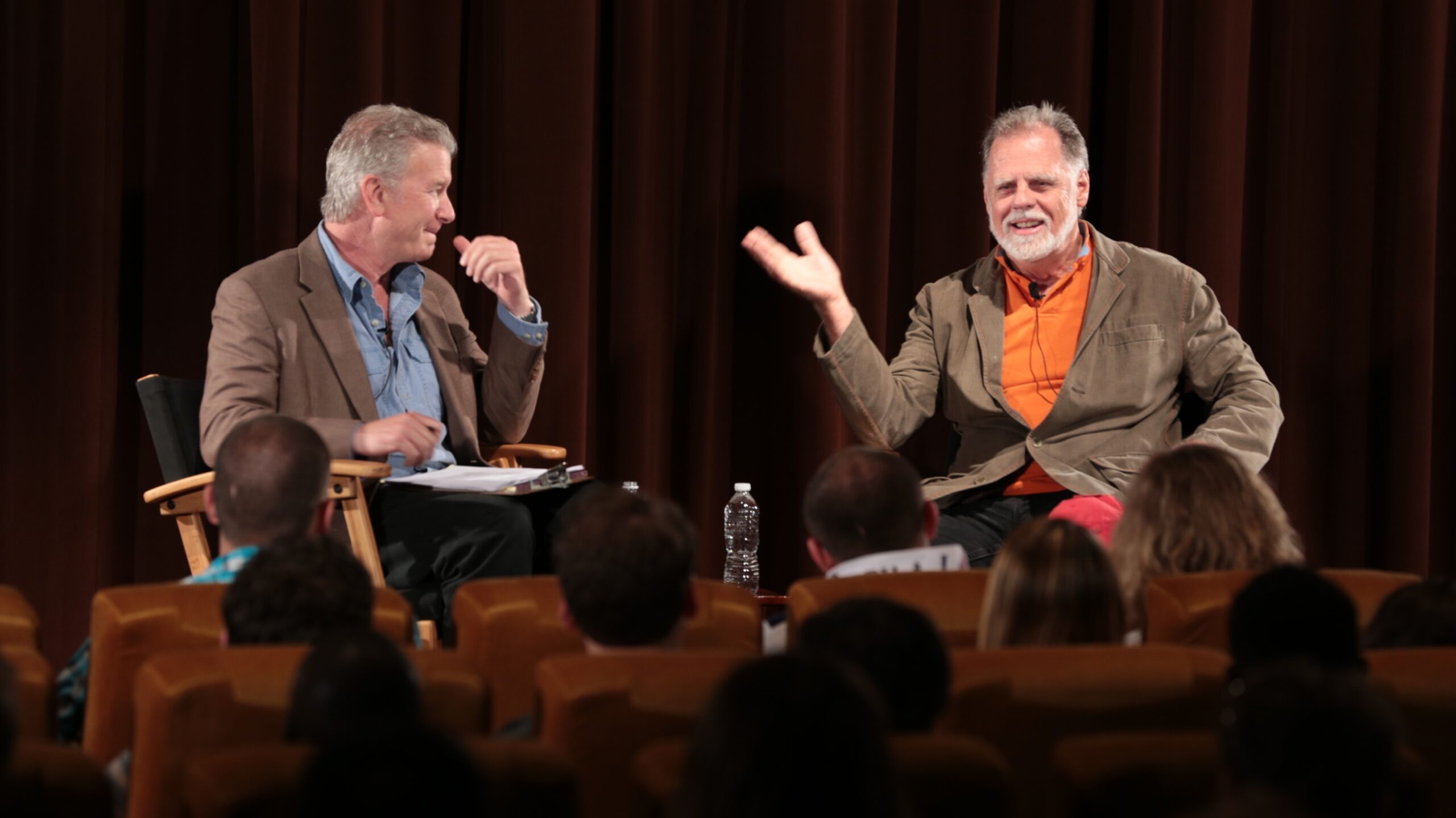
Last Wednesday, at the Warner Bros theater in LA, New York Film Academy students were treated to a screening of the classic Al Pacino and Keanu Reeves film, The Devil’s Advocate. Following the screening, director Taylor Hackford dropped by to talk about the film and his career on a whole. Taylor, who directed such films as An Officer and a Gentleman and Dolores Claiborne, says he developed an interest in film during his time in the peace corps in Bolivia. He saw many films there and shot his own on super 8 film. After coming back from the peace corps, he went to law school for two weeks, but then quit because he decided he really wanted to work in the film industry.
His first job was in the mailroom at the Los Angeles TV station KCET. He began writing copy, editing, shooting and reporting for their news program. Working as a journalist really helped Taylor develop as a director–learning how to tell people’s stories and make them feel comfortable enough to open up. He also learned how to “deliver on a deadline” with the high turnover rate in news. He eventually started making documentaries for the news station and became passionate about the stories he was telling.
 Taylor also has a love for music and it’s no surprise that his films are known for their great soundtracks. In An Officer and a Gentleman, Taylor knew that music was important to the working class people the movie was about. Taylor went to great lengths to find the right music and especially in convincing the producers to spend the money on the soundtrack. His persistence didn’t stop there. In order to convince the studio to shoot the opening of An Officer and a Gentleman in the Philippines (which sets up Richard Gere’s backstory), he agreed that any expenditures that went over budget for the additional shooting would be taken out of his own salary. Paramount never realized what an amazing movie they had, until it sold so well and became such a success. “Nothing is ever predictable,” Taylor told the students. “All you can do is keep your vision. That is all you have.”
Taylor also has a love for music and it’s no surprise that his films are known for their great soundtracks. In An Officer and a Gentleman, Taylor knew that music was important to the working class people the movie was about. Taylor went to great lengths to find the right music and especially in convincing the producers to spend the money on the soundtrack. His persistence didn’t stop there. In order to convince the studio to shoot the opening of An Officer and a Gentleman in the Philippines (which sets up Richard Gere’s backstory), he agreed that any expenditures that went over budget for the additional shooting would be taken out of his own salary. Paramount never realized what an amazing movie they had, until it sold so well and became such a success. “Nothing is ever predictable,” Taylor told the students. “All you can do is keep your vision. That is all you have.”
While shooting The Idol Maker, Taylor was not as experienced as a director. He came onto set with a very detailed plan as to how he wanted to shoot everything. However, his cinematographer and 1st AD had different opinions, and since they were much more experienced than him, Taylor ended up using their ideas. When he saw the dailies two days later, Taylor realized he had made a big mistake–the drama wasn’t there and the shots didn’t mean anything. After that, Taylor remained firm in following his own vision. There was a reason he was hired to direct the movie. “You have to make decisions. If you must, ‘get on with it’ and you can’t ‘take your time.’ Time is money with filmmaking. Preparation is key–you can work through most of your potential mistakes if you think it out ahead of time.”
Taylor now directs a scene without providing blocking instructions to his actors and tells them to “do the scene.” The actors typically find a few great moments that Taylor will incorporate into the scene. This way the actor feels like he is using their ideas and he’s able to include some spontaneous moments that he hadn’t thought of. Directors have to learn how to work with an actor until they can catch them in an authentic moment. Taylor used the example of working with Keanu Reeves who is not, at first, as spontaneous as Al Pacino. He would have to do eight takes with Keanu before he would break out of his preconceived notions of how to perform. This is a tactic that he had to employ as a director, which worked for this particular scenario.